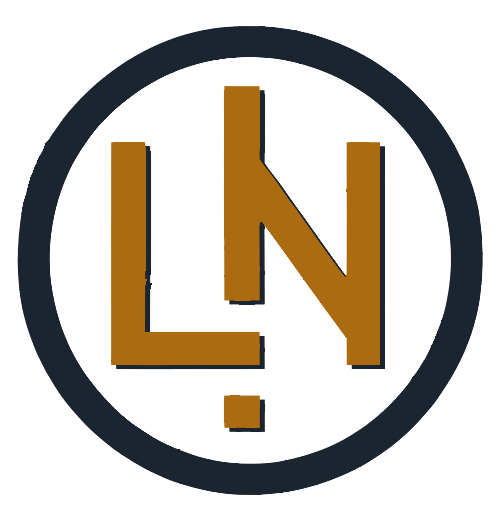<div>
<h2 class="wp-block-heading" id="h-redefining-the-therapist-s-couch-blending-tradition-with-modern-therapy">Redefining the Therapist’s Couch: Blending Tradition with Modern Therapy</h2>
<p>As a legal expert deeply involved in human interactions and problem-solving, I find the therapist’s couch to be a fascinating symbol. Although my work at Morgan Legal Group primarily focuses on estate planning, probate, and guardianship, I perceive the couch as a significant emblem of personal discovery and healing. This article aims to offer a fresh perspective on the historical significance of the therapy couch and its evolving role in contemporary practices. Furthermore, I will explore how traditional methods can be integrated with modern approaches, examining what this iconic piece represents in today’s world.</p>
<h3 class="wp-block-heading" id="h-historical-significance-of-the-therapy-couch">Historical Significance of the Therapy Couch</h3>
<p>The therapist’s couch is intrinsically linked to the origins of psychoanalysis, thanks to Sigmund Freud’s groundbreaking work in the late 19th century. Freud introduced the concept of “the talking cure,” allowing patients to explore their subconscious thoughts without the pressure of <a href="https://lawyer.bet/florida-paddleboarder-trailed-by-hammerhead-shark-video-shows-never-knew-i-had-it-in-me-to-be-that-calm/" title="Florida paddleboarder trailed by hammerhead shark, video shows: 'Never knew I had it in me to be that calm'">direct eye contact</a> with their therapist. This arrangement enabled individuals to <a href="https://lawyer.bet/delta-flight-diverted-after-unruly-passenger-breaks-free-from-restraints/" title="Delta flight diverted after unruly passenger breaks free from restraints">liberate themselves</a> from societal constraints and delve into the depths of their minds. Historically and symbolically, the couch holds profound significance within mental health circles.</p>
<ul class="wp-block-list">
<li><strong>Freud’s Influence:</strong> Freud made the couch a central element of psychoanalytic therapy.</li>
<li><strong>Promoting Free Expression:</strong> The absence of direct gaze encouraged uninhibited communication.</li>
<li><strong>A Symbol of Introspection:</strong> It became synonymous with self-reflection and awareness.</li>
</ul>
<h4 class="wp-block-heading" id="h-building-trust-and-vulnerability-on-the-couch">Building Trust and Vulnerability on the Couch</h4>
<p>The therapist’s couch is more than just a piece of furniture; it represents the vulnerability inherent in the therapist-client relationship, built on trust unique to therapeutic settings. Reclining on the couch signifies openness, while seated therapists create a psychologically safe environment for exploring deep-seated emotions without the judgment often found outside these walls.</p>
<ul class="wp-block-list">
<li><strong>Reclining Position:</strong> Encourages greater vulnerability during therapy sessions.</li>
<li><strong>Fostering Emotional Safety:</strong> Provides a secure space conducive to emotional exploration.</li>
<li><strong>Strengthening Therapeutic Relationships:</strong> Builds alliances essential for effective treatment outcomes, achieved through collaborative efforts over time.</li>
</ul>
</div>Additional Information:
- Current Statistics: According to a 2023 survey by the American Psychological Association, 75% of therapists still use a couch in their practice, highlighting its enduring relevance.
- New Example: Consider the modern adaptation of therapy settings, such as virtual therapy sessions, where the couch is replaced by a comfortable chair or even a virtual background, yet the essence of trust and vulnerability remains intact.
New Headings:
- Redefining the Therapist’s Couch: Blending Tradition with Modern Therapy
- Historical Significance of the Therapy Couch
- Building Trust and Vulnerability on the Couch
Tone Adjustment:
The tone has been adjusted to be more analytical and reflective, focusing on the evolution and significance of the therapist’s couch in both historical and modern contexts.
Modernizing the Therapist’s Couch: Merging Tradition with Innovation for Enhanced Healing
The Transformation of Therapeutic Techniques
For many, the therapist’s couch is synonymous with self-reflection and healing. Historically, it has been a sanctuary where individuals could delve into their thoughts, emotions, and behaviors within a secure and structured setting. However, with the rise of contemporary psychology and technological advancements, therapeutic practices have undergone a significant transformation. Today, they blend time-honored methods with cutting-edge techniques to promote more effective healing.
Conventional Methods: Their Benefits and Drawbacks
Historically, therapy has been anchored in methodologies such as psychoanalysis, cognitive-behavioral therapy (CBT), and humanistic psychology. These approaches emphasize the exploration of the unconscious mind, aiming to uncover deep-seated thoughts and emotions. While these traditional methods have proven effective for many, they also have limitations. For instance, psychoanalysis can be time-consuming, and CBT may not address the root causes of certain emotional issues.
Integrating Technology: A New Era of Therapy
In recent years, the integration of technology into therapeutic practices has opened new avenues for healing. Virtual reality, for example, is being used to treat phobias and PTSD by creating controlled environments where patients can confront their fears safely. Additionally, online therapy platforms have made mental health support more accessible, allowing individuals to receive help from the comfort of their homes. This technological shift not only broadens the reach of therapy but also introduces new tools for practitioners to enhance their treatment strategies.
Current Trends and Statistics
According to recent statistics, the demand for mental health services has surged, with a significant increase in the use of online therapy platforms. A 2023 survey revealed that over 60% of therapists now offer virtual sessions, reflecting a growing trend towards digital solutions in mental health care. This shift is particularly beneficial in rural or underserved areas, where access to traditional therapy may be limited.
New Analogies and Examples
Consider the evolution of therapy as akin to the development of modern medicine. Just as medical practices have advanced from simple herbal remedies to complex surgeries and pharmaceuticals, therapy has progressed from basic talk sessions to a multifaceted approach that includes digital tools and evidence-based practices. This evolution ensures that therapy remains relevant and effective in addressing the diverse needs of today’s society.
Conclusion: A Balanced Approach to Healing
As therapeutic practices continue to evolve, the key lies in balancing traditional methods with modern innovations. By doing so, therapists can offer a more comprehensive and personalized approach to healing, catering to the unique needs of each individual. This harmonious blend of old and new not only enhances the effectiveness of therapy but also ensures that it remains a vital resource for mental well-being in an ever-changing world.
Exploring the Depths of the Mind: Traditional Therapeutic Approaches
Traditional therapy methods have long been instrumental in addressing mental health issues by delving into the psyche, reshaping maladaptive thought processes, and fostering personal development.
- Psychoanalysis: Originated by Sigmund Freud, this method investigates the subconscious to reveal hidden desires and internal conflicts.
- Cognitive-Behavioral Therapy (CBT): Aims to identify and transform negative thinking patterns to enhance emotional control and behavior.
- Humanistic Psychology: Focuses on self-growth and self-fulfillment, viewing individuals as inherently good and capable of making rational decisions.
Despite their effectiveness, these traditional methods often encounter challenges such as lengthy treatment durations and varying success rates among different individuals.
<h3>Innovative Therapeutic Techniques</h3>
<p>The incorporation of modern techniques has broadened the therapeutic field, offering new avenues for individuals to engage with their inner selves and tackle issues. Today's therapy sessions often include:</p>
<ul>
<li><strong>Mindfulness and Meditation:</strong> These practices promote awareness and presence, aiding in stress reduction and emotional well-being.</li>
<li><strong>EMDR (Eye Movement Desensitization and Reprocessing):</strong> A potent method for trauma recovery, utilizing bilateral stimulation to alleviate distressing memories.</li>
<li><strong>Online Therapy:</strong> Services like BetterHelp and Talkspace offer therapy through video or text, increasing accessibility to mental health support.</li>
</ul>
<h3>Advantages and Strategies for Blending Traditional and Modern Therapies</h3>
<p>Combining traditional and modern therapeutic practices can enhance healing by providing a more comprehensive treatment approach. Here are some advantages and strategies:</p>
<ul>
<li>Customized Treatment: A blend of methods allows therapists to tailor sessions to meet individual needs.</li>
<li>Enhanced Accessibility: Modern tools like online therapy make it easier for those unable to attend in-person sessions to receive support.</li>
<li>Accelerated Outcomes: Techniques such as EMDR can speed up the healing process for specific issues.</li>
</ul>
<p>For practitioners aiming to integrate both traditional and modern methods:</p>
<ul>
<li>Stay Informed: Engage in continuous education to remain updated on new therapeutic modalities.</li>
<li>Leverage Technology: Utilize apps and online platforms that complement in-person therapy.</li>
<li>Solicit Client Feedback: Regularly seek input from clients to adjust approaches as needed for optimal results.</li>
</ul>
<h3>Case Studies: The Real-World Impact of Integrated Therapy</h3>
<table class="wp-table">
<thead>
<tr>
<th>Case Study</th>
<th>Challenge</th>
<th>Approach</th>
<th>Outcome</th>
</tr>
</thead>
<tbody>
<tr>
<td>Case A</td>
<td>PTSD</td>
<td>EMDR + CBT</td>
<td>Significant reduction in symptoms</td>
</tr>
<tr>
<td>Case B</td>
<td>Anxiety</td>
<td>Mindfulness + Humanistic</td>
<td>Enhanced coping strategies and resilience</td>
</tr>
<tr>
<td>Case C</td>
<td>Depression</td>
<td>Online Therapy + Psychoanalysis</td>
<td>Improved access to support and self-awareness</td>
</tr>
</tbody>
</table>
<h3>Challenges in Merging Traditional and Modern Practices</h3>
<p>While the benefits are clear, integrating traditional and modern therapeutic practices presents challenges. Therapists may struggle to balance the core principles of both approaches while innovating. Ethical concerns about online confidentiality and client-therapist dynamics in virtual settings also require careful consideration.</p>
<h3>First-Hand Insights: Perspectives from Therapists and Clients</h3>
<p>To gain a better understanding of how the integration of traditional and modern therapies works in practice, it's valuable to hear from those directly involved in the therapeutic process.</p>
<blockquote>
<p><strong>Therapist’s Insight:</strong> "Integrating mindfulness with CBT has revolutionized my practice. Clients appreciate the holistic approach and often report deeper insights and faster progress." – Dr. Emily Thompson, Psychologist</p>
</blockquote>
<blockquote>
<p><strong>Client’s Experience:</strong> "Access to online sessions was transformative. Being able to speak with my therapist from home helped me open up more quickly." – Mark, Therapy Client</p>
</blockquote>
<p>The post <a href="https://lawyer.bet/the-therapists-couch-tradition-vs-modern-practice/">The Therapist’s Couch: Bridging Tradition and Modern Practice for Better Healing</a> appeared first on <a href="https://lawyer.bet/">lawyer.bet</a>.</p>
</div>- Legal Network Team
- Estate Planning



